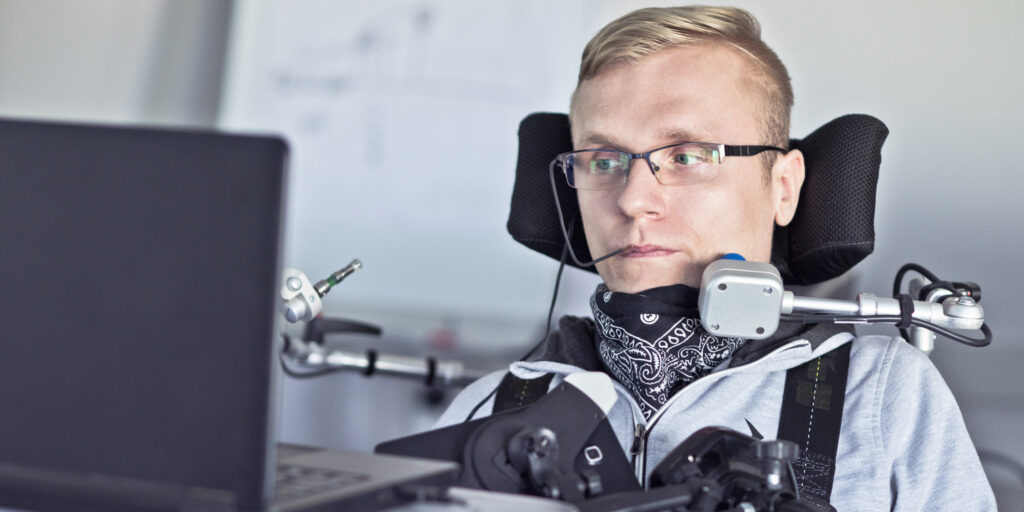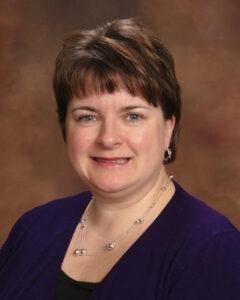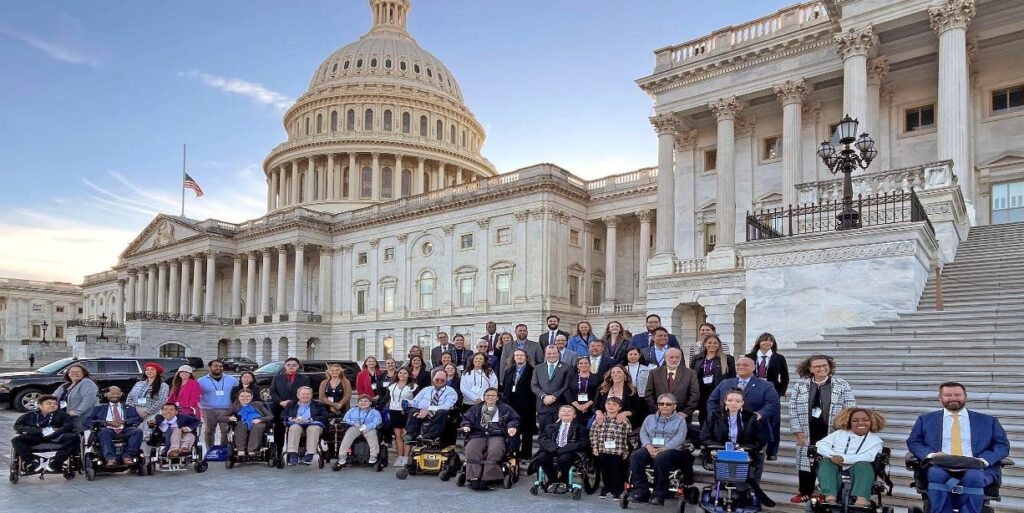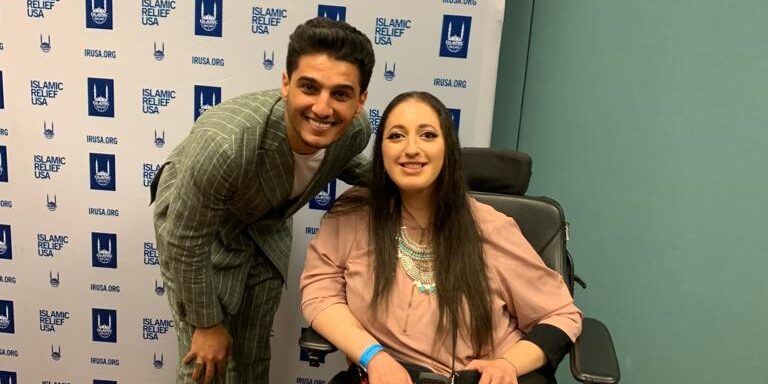
Speech Devices Improve Communication When ALS Affects the Voice
By Chris Anselmo | Saturday, May 24, 2025
As amyotrophic lateral sclerosis (ALS) progresses, it affects many aspects of daily life. One of the most significant impacts is its effect on speech.
“Communication is such a key factor in who we are as people and how we represent and express ourselves that this is one of the more devastating aspects of the disease and can be one of the more challenging things to overcome,” says Matthew Harms, MD, a neurologist at Columbia University and an MDA Care Center physician.
Fortunately, with advances in technology, there are more options than ever for communicating when ALS affects speech.
How ALS impacts speech
ALS is a neurodegenerative disease that affects motor neurons — nerve cells in the brain and spinal cord. As motor neurons are depleted, ALS weakens muscles throughout the body, including the muscles involved in speech.

Matthew Harms, MD, is a neurologist at the MDA Care Center at Columbia University.
“Typically, at first, people have slow but intelligible speech,” says Dr. Harms. “As the disease progresses, speech can become so slow that it’s inefficient for communicating, or it can become slurred and difficult to understand.” For about one-third of people with ALS, changes with speech or voice are among the first noticeable symptoms.
ALS can affect the ability of the lips and tongue to form clear speech. It also affects the larynx (voice box) by making the vocal cords tight or spastic. “This can make the voice breathy or hoarse,” says Kim Winter, a speech language pathologist (SLP) in the neuromuscular clinic at the Hospital for Special Care in Connecticut.
As symptoms progress, breathing muscles also become affected. “Breath support is kind of like gas in a car — if the person doesn’t have good breath support, they’re not going to be able to produce good-sounding speech or project their voice so people can hear,” says Kim.
Caring for speech loss
A multidisciplinary care team can help people with ALS prepare for and manage voice changes.

Kim Winter helps people with ALS communicate effectively.
ALS care is generally managed by a neurologist. The neurologist may bring in an SLP to assess the patient’s current speech loss and work with the patient to determine a course of action. “My goal is to help people use their speech and their voice to communicate effectively as much as possible and for as long as possible,” says Kim.
An occupational therapist (OT) is typically involved to assess a patient’s ability to operate communication devices. When verbal speech is limited, OTs and SLPs work together to determine which devices and techniques can make communication easier. This is especially important if the person is also experiencing decreased hand function.
“Their goal is to pair the patient with the right, most efficient way of communicating,” says Dr. Harms.
Communication options for people with ALS
Various resources and technologies are available to help with communication, depending on the severity of a person’s speech loss and their ability to control devices.
“There are lots of technologies, including off-the-shelf devices that are more readily available today than they used to be,” says Kim. “At the Hospital for Special Care, we have a lot of equipment available for patients to test. We like them to come in and try things before they go out and purchase something.”
People with adequate hand strength may opt for a simple method of communication:
- Writing with pen and paper or a Boogie Board, which has an LCD screen that allows the user to write and erase words
- Typing on a computer or touch-screen tablet
- Using hand straps to hold a pen or stylus if hand strength starts to weaken
For people with more advanced ALS, other communication technologies are available:
- Microphone: Wearable headband and collar styles help amplify the voice for those who speak softly.
- Text-to-speech device or app: This can be a separate device or software added to an existing device. Users type, and the system reads the text aloud in a synthesized voice.
- Eye-gaze device: This technology enables a person to control a device with their eye movements. The user can select phrases or letters on a screen to spell out what they want to say, and the system reads the text aloud in a synthesized voice.
- Brain-computer interface: In this rapidly evolving technology, a chip or electrode is implanted in the head. It sits on the brain and uses artificial intelligence (AI) to determine what the person is trying to say. “Even if the person can’t say the words out loud, the computer can figure out what was intended and then say the word or the letter,” says Dr. Harms. “This technology is getting really good. We’re very excited to have these come to everyday patient care eventually.”
Voice banking and cloning
Many people facing speech decline choose to preserve their voice through voice banking, a process of digitally recording a person speaking to create a synthetic voice that sounds like them. This synthetic voice can be paired with text-to-speech and eye-gaze devices.
It’s ideal to begin voice banking as early as possible after an ALS diagnosis, before voice changes occur. Sometimes, however, this is not possible.
Fortunately, a new technology has emerged within the last few years: voice cloning. This technology uses AI to create a digital replica of someone’s voice.
“Voice cloning can create a voice from as little as a one-minute recording,” says Kim. “A person can use a voicemail message from before their voice changed, or it could be extrapolated audio from home videos. It’s been a game changer for a lot of folks.”
The AI audio company ElevenLabs has partnered with nonprofit Bridging Voice to help give ALS patients access to voice cloning and text-to-speech technology.
More resources for ALS and speech devices
In addition to the devices mentioned above, there are many accessories that can help people use communication technologies more effectively. For an overview of devices and equipment, check out the ALS Association’s Communication & Assistive Devices Equipment List. Read the Les Turner ALS Foundation’s ALS & Communication webpage for more information and tips.
Next Steps and Useful Resources
- Download our ALS Impact Sheet to see how MDA supports families living with ALS and uses your donations to help find treatments and cures.
- Download MDA’s ALS Fact Sheet for an overview of ALS signs, symptoms, and treatments.
- Watch MDA Facebook Live: ALS Care and Research Updates to learn about the latest in care and research updates related to ALS.
- Stay up to date on Quest content! Subscribe to Quest Magazine and Newsletter.
TAGS: Equipment and Assistive Devices, Featured Content, Technology
TYPE: Blog Post
Disclaimer: No content on this site should ever be used as a substitute for direct medical advice from your doctor or other qualified clinician.




